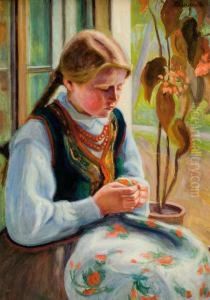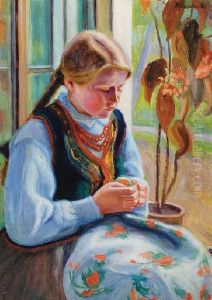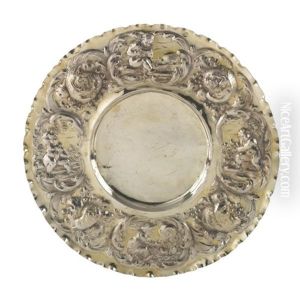Stefan Modzelewski Paintings
Stefan Modzelewski was a Polish artist, born in 1891, whose work spanned the early to mid-20th century, a period marked by significant upheaval and innovation in the arts. Modzelewski's artistic journey was deeply influenced by the historical context of his times, including the impact of World War I, the interwar period, and the subsequent changes brought about by World War II. His contributions, while perhaps not as globally recognized as some of his contemporaries, played a noteworthy role in the development of modern art in Poland.
Modzelewski's early life was steeped in the rich cultural and artistic heritage of Poland, a country that has historically straddled the East and West of Europe, integrating diverse influences into its national identity. This background informed his artistic vision, which was characterized by a blend of traditional Polish motifs with modernist trends. He received his formal education in art at some of the most prestigious institutions of his time, which enabled him to develop a distinctive style that incorporated elements of Expressionism, Cubism, and later, Constructivism. His work often reflected a keen interest in the social and political dynamics of his country, making him part of a generation of artists who believed in the power of art to influence society.
Throughout his career, Modzelewski engaged with various artistic mediums, including painting, sculpture, and graphic design, showcasing his versatility and willingness to experiment. His involvement with avant-garde groups provided him with platforms to exhibit his work and collaborate with other artists, contributing to the vibrant cultural life of interwar Poland. However, the outbreak of World War II and the subsequent Soviet control of Poland profoundly affected Modzelewski, both personally and professionally. Like many of his peers, he faced restrictions on his artistic freedom and opportunities, which led to a period of relative obscurity.
Stefan Modzelewski's legacy is that of an artist who navigated the complexities of a turbulent era with creativity and resilience. His work remains a testament to the enduring spirit of Polish art, reflecting both the struggles and triumphs of his homeland. He passed away in 1952, leaving behind a body of work that, while perhaps not as widely known outside of Poland, continues to be celebrated for its contribution to the modernist movement in Eastern Europe.


